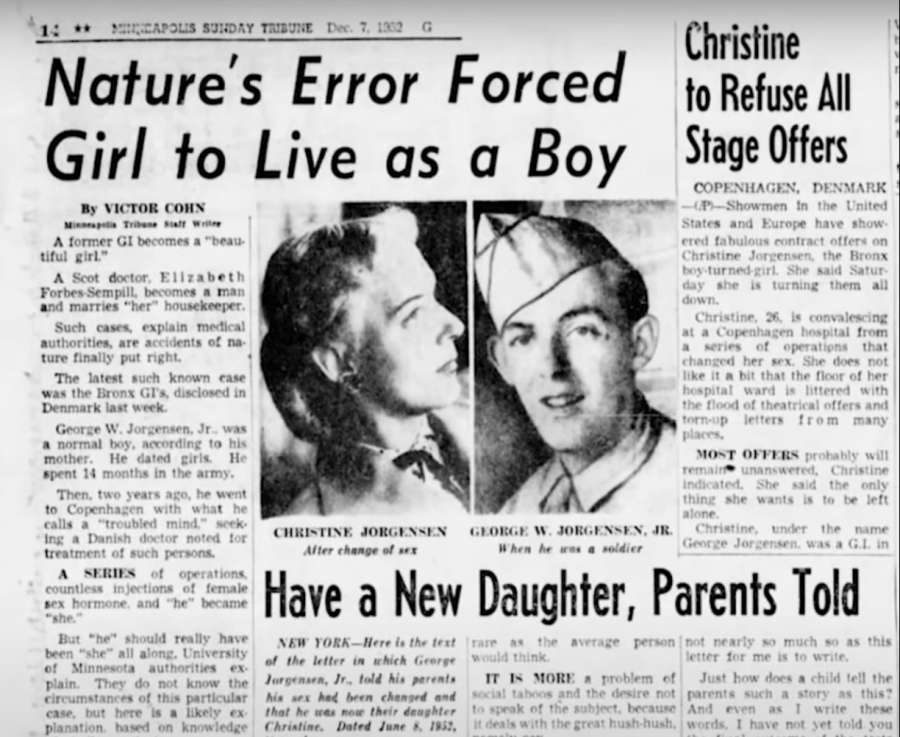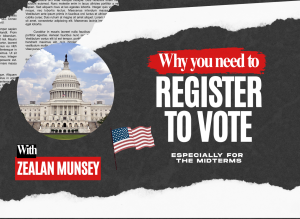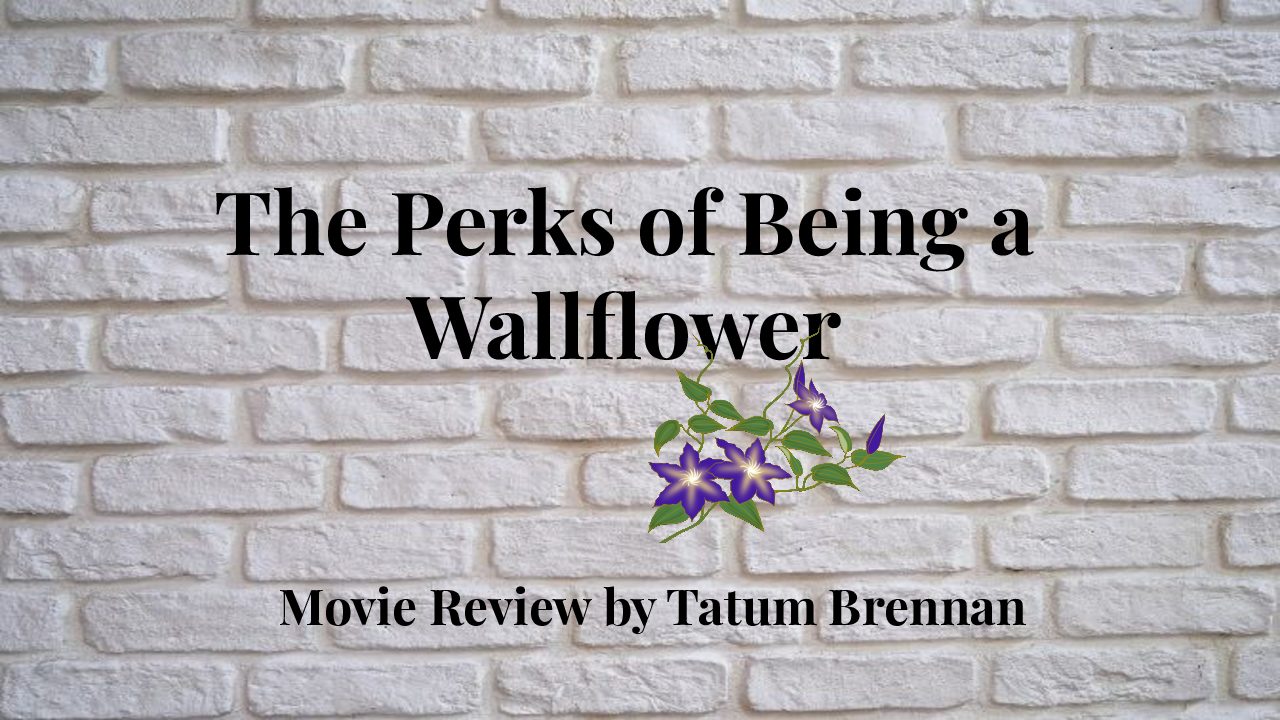Equipping teachers with tools to talk to Trans youth
Across the front pages of numerous publications in 1952, Christine Jorgensen was celebrated both as a World War II veteran and a transgender actress. 70 years later, trans people are demonized in the media.
April 5, 2023
I have been deprogramming my ideas on gender since middle school, but most people are just starting now. It’s a constant battle and one that I am still fighting. Gender has always been a foreign concept to me—it’s a performance that I wasn’t willing to comply with, and that caused ridicule. Many people were hostile towards my outward appearance, barking at me, and yelling slurs at me from their cars. The need to openly express their hatred felt bizarre to me. I felt isolated from my peers because I could not understand their hate or their compliance with that hate. It took me a long time to fully accept that every person was doing their best with the tools they had. I want to create better tools for people who want to support trans people. I want to create these tools so you can provide a safer place for queer people.
For anyone who wants a quick read, here are some bullet points to give you better tools as an ally:
- Don’t assume. Don’t assume what’s in someone’s pants, how they identify, or even their sexual orientation. Assuming their identity(ies) will only cause harm to the person.
- Instead of asking for someone’s pronouns, introduce yourself with your own pronouns. It allows a safe space for people who want to be seen. If you ask, you could make someone uncomfortable because they don’t want to be outed as trans.
- Listen–don’t speak. Instead of asking questions, allow transgender people to talk for themselves. They will share their story when they feel comfortable.
- Don’t disclose to others that someone is transgender without the trans person’s permission. Coming out to people is a decision that that person needs to make themself.
- Understand there is no “right” or “wrong” way to transition. Every trans experience is unique:
- the age of realization
- the time they come out after that
- how many people they tell
- if they take hormones or not
These are all personal. The person might be different from what you think of a trans person, but they are just as valid and deserve as much respect as you.
- Avoid backhanded compliments:
- “I wouldn’t have known you were trans”
- “You’re so brave”
- “You look just like a real man”
- “You are so pretty even though you are trans”
These are all phrases you might think are nice but honestly hurt.
It’s hard to cover everything in just a handful of bullet points, but those are some very important things that can make all the difference if you take them into consideration in your day-to-day life.
Before you can understand transgender people and be an ally, you should begin by deconstructing your understanding of your own gender. I briefly interviewed Melissa Harris, a professor of psychology and family studies, about how she has taught her students about gender. She would tell her students to “first, notice how you’re sitting or standing. How much space are you taking up, your posture, and if you’re crossing your legs? Your choice of clothing and hairstyle, your makeup or lack thereof, the length of your nails, if you have them painted or not, perhaps the role(s) you play in your close relationships, and your career. They are all impacted by your gender in one way or another.” In order to deprogram yourself, you have to question these things. Imagine what it would be like to be the opposite gender, wearing a bikini instead of swim trunks and vice versa. Question why we are so obsessed with genitalia that we refer to people based on what genitals we think someone has and expect them to act in a certain way because of that feature. Question how your behavior is affected by gender.
Gender is a rule of culture, not nature. Further, it is not a biological term; it’s a construct based in society. We teach misinformation in sex ed classes on puberty and the complexity of hormonal cycles to enforce the “gender binary,” meaning the presumption that there are only two sexes. This presumption reduces “biological complexity to establish social hierarchy [for] a political process” (Alok Vaid-Menon). Having these categories keeps power divided enough that society can not congregate together. We are taught that the sexes are polar opposites. We separate ourselves from others using political parties, class, race, sexuality and gender. These differences keep people divided in order to control the social hierarchy. Despite the school system, the television and the news saying sex is binary, it is not. Sex is not binary; nor is gender. “The DNA of any two people on Earth is 99.6 percent identical” (Genetics by the Numbers). This 0.4 percent change in every person is what makes each one of us different. That difference does not make females and males two separate things. Instead, it is estimated that 1.7 percent of the population is intersex, meaning they do not fit the binary of male and female. Testosterone is not just a male hormone. Estrogen is not just a female hormone.
So instead of having a binary, accept each and every part of yourself, both “feminine” and “masculine.” With that knowledge, you have become a better ally. You are making the effort to educate yourself and gaining the tools to provide a safer place for trans people. You have taken that first step, possibly multiple. Hopefully this article has provided you the tools to keep walking towards a better you.
Below, you will find additional resources that I highly recommend reading:
How artist Alok Vaid-Menon lives beyond the gender binary
So, Your Kid Came Out as Trans. (Where Do You Start?)






